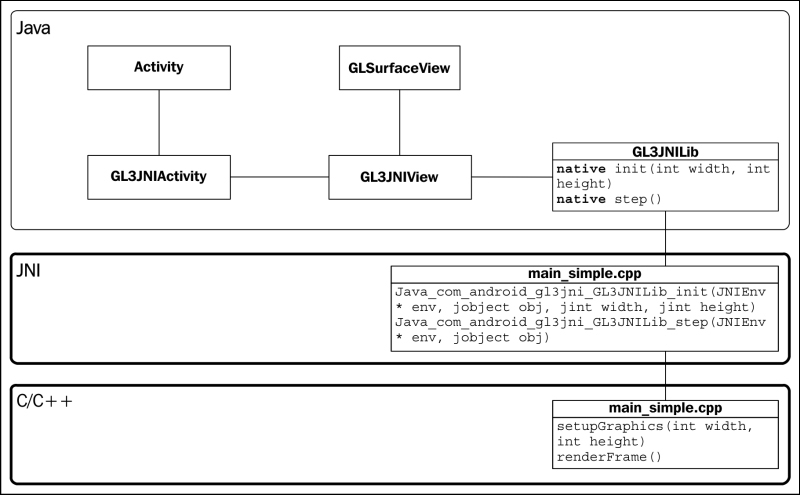Creating your first Android application with OpenGL ES 3.0
In this section, we will complete our implementation with native code in C/C++ to create the first Android application with OpenGL ES 3.0. As illustrated in the simplified class diagram, the Java code only provides the basic interface on the mobile device. Now, on the C/C++ side, we implement all the functionalities previously defined on the Java side and also include all the required libraries from OpenGL ES 3.0 (inside the main_simple.cpp file). The main_simple.cpp file also defines the key interface between the C/C++ and Java side by using the Java Native Interface (JNI):

Getting ready
We assume that you have installed all the prerequisite tools from the Android SDK and NDK in addition to setting up the basic framework introduced in the previous section. Also, you should review the basics of shader programming, introduced in earlier chapters, before you proceed.
How to do it...
Here, we describe the implementation of the OpenGL ES...



























































